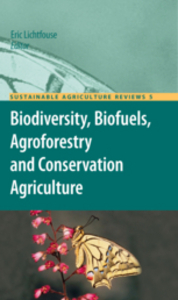Sustainable irrigation to balance supply of soil water, oxygen, nutrients and agro-chemicals
Bhattarai, Surya P., Midmore, David J., and Su, Ninghu (2010) Sustainable irrigation to balance supply of soil water, oxygen, nutrients and agro-chemicals. In: Lichtfouse, Eric, (ed.) Biodiversity, Biofuels, Agroforestry and Conservation Agriculture. Sustainable Agriculture Reviews, 5 . Springer, Dordrecht, Netherlands, pp. 253-286.
![[img]](https://researchonline.jcu.edu.au/15230/6.hassmallThumbnailVersion/15230_Su_2010.jpg)
|
Image (JPEG) (Book Cover)
- Cover Image
Download (73kB) |
|
|
PDF (Published Version)
- Published Version
Restricted to Repository staff only |
Abstract
The socio-economic pressure for improvements in irrigation efficiencies is increasing due to intense competition for water between agricultural, domestic and industrial users as well as demands for compliance with environmental regulations. Precision irrigation technology involving less irrigation water and uniform application across the field is therefore important. In the context of declining water allocation for irrigation and the variations in weather and drought patterns attributed to global climate change, efficient and precise applications are necessity. Traditional irrigation methods such as furrow, flood and sprinkler are neither efficient nor environmentally benign. Precision irrigation methods such as drip and subsurface drip irrigation are advocated because they are more water use efficient and because they offer a possible approach to meet projected food demand, a doubling by the 2050. In spite of greater water use efficiency afforded by minimal soil surface evaporation and deep drainage, and ease of automation, wide scale adoption of surface and subsurface drip irrigation technology is limited. This is due to their high investment cost for installation. They often lack a significant yield benefit when compared to conventional irrigation practice. Reasons are probably linked to a sustained wetting front around emitters. These emitters impose a condition of low oxygen content in the root-dense rhizosphere surrounding emitters that impede root respiration, and negatively impact on plant uptake of water and nutrients, leading to constrained yield performance.
Here we review aspects of soil oxygen dynamics during irrigation and present evidence for sustained hypoxia in the wetting fronts associated with drip and subsurface drip irrigation. This condition of low oxygen content in the rhizosphere conditioned by the drip irrigation we term as the irrigation paradox.
| Item ID: | 15230 |
|---|---|
| Item Type: | Book Chapter (Research - B1) |
| ISBN: | 978-90-481-9512-1 |
| Keywords: | multigation, oxygation, fertigation, chemigation, soil aeration, water use efficiency, vertisols, hypoxia, wetting fronts |
| Related URLs: | |
| Date Deposited: | 31 Mar 2011 04:28 |
| FoR Codes: | 04 EARTH SCIENCES > 0406 Physical Geography and Environmental Geoscience > 040608 Surfacewater Hydrology @ 50% 07 AGRICULTURAL AND VETERINARY SCIENCES > 0799 Other Agricultural and Veterinary Sciences > 079901 Agricultural Hydrology (Drainage, Flooding, Irrigation, Quality, etc) @ 50% |
| SEO Codes: | 96 ENVIRONMENT > 9614 Soils > 961402 Farmland, Arable Cropland and Permanent Cropland Soils @ 100% |
| Downloads: |
Total: 714 Last 12 Months: 4 |
| More Statistics |



